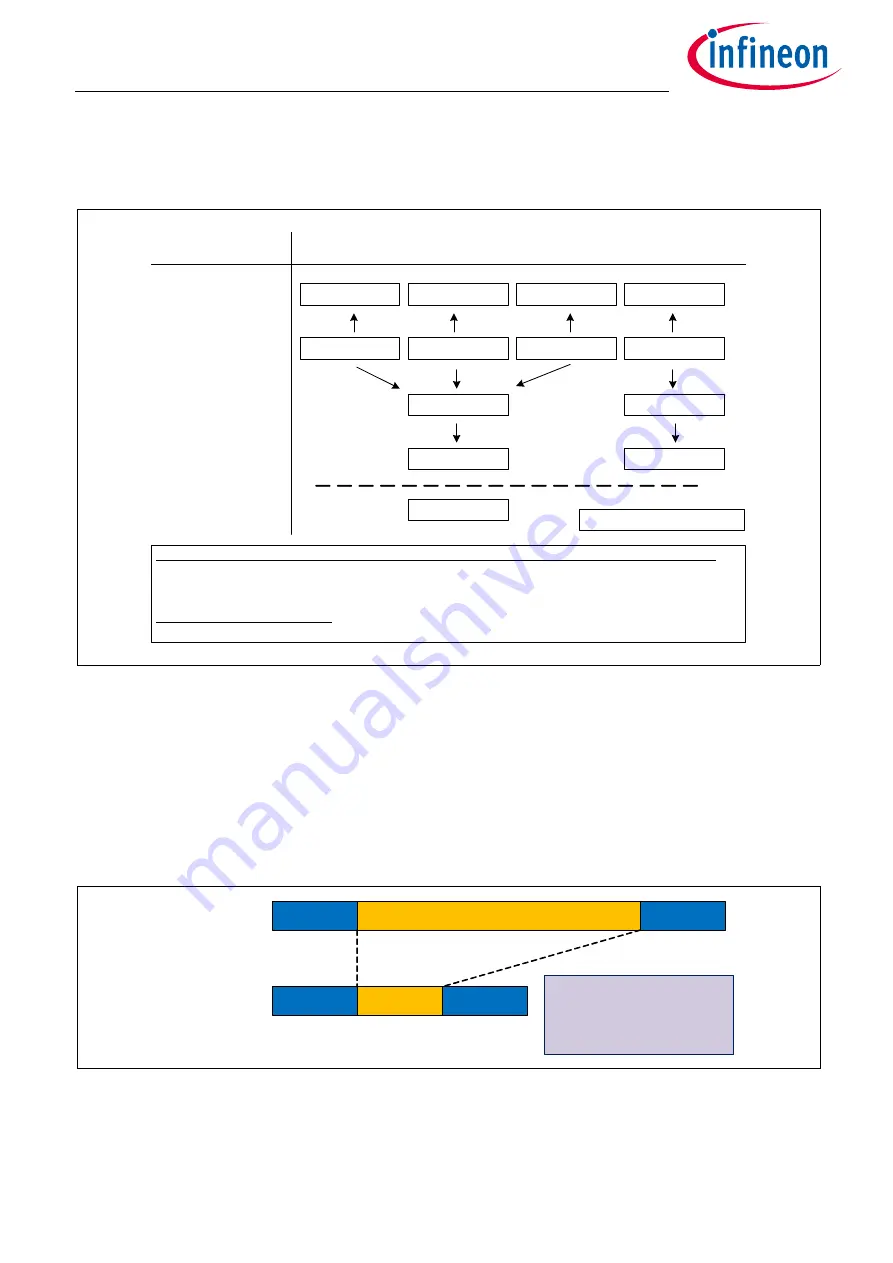
Data Sheet
67
Rev. 1.00
2017-07-31
TLE9262BQXV33
High Speed CAN Transceiver
The different transceiver modes can be controlled via the SPI
CAN
bits.
Figure 26
shows the possible transceiver mode transitions when changing the SBC mode.
Figure 26 CAN Mode Control Diagram
CAN FD Support
CAN FD stands for ‘CAN with Flexible Data Rate’. It is based on the well established CAN protocol as specified
in ISO 11898-1. CAN FD still uses the CAN bus arbitration method. The benefit is that the bit rate can be
increased by switching to a shorter bit time at the end of the arbitration process and then to return to the
longer bit time at the CRC delimiter, before the receivers transmit their acknowledge bits. See also
Figure 27
.
In addition, the effective data rate is increased by allowing longer data fields. CAN FD allows the transmission
of up to 64 data bytes compared to the 8 data bytes from the standard CAN.
Figure 27 Bite Rate Increase with CAN FD vs. Standard CAN
Not only the physical layer must support CAN FD but also the CAN controller. In case the CAN controller is not
able to support CAN FD then the respective CAN node must at least tolerate CAN FD communication. This CAN
SBC Normal Mode
SBC Mode
CAN Transceiver Mode
SBC Stop Mode
SBC Sleep Mode
SBC Restart Mode
Receive Only
Normal Mode
OFF
Wake Capable
Receive Only
OFF
Wake Capable
OFF
Woken
1
OFF
Wake Capable
1
after a wake event on CAN Bus
Normal Mode
Behavior after SBC Restart Mode - not coming from SBC Sleep Mode due to a wake up of the respective transceiver:
If the transceivers had been configured to Normal Mode, or Receive Only Mode, then the mode will be changed to Wake
Capable. If it was Wake Capable, then it will remain Wake Capable. If it had been OFF before SBC Restart Mode, then it
will remain OFF.
Behavior in SBC Development Mode:
CAN default value in SBC INIT MODE and entering SBC Normal Mode from SBC Init Mode is ON instead of OFF.
SBC Fail-Safe Mode
Wake Capable
Example:
- 11bit iden 8Byte data
- Arbitration Phase
500kbps
- Data Phase
2Mbps
average bit rate
1.14Mbps
CAN Header
Data phase
(Byte 0 – Byte 7)
CAN Footer
Standard CAN
message
CAN Header
Data phase
(Byte 0 – Byte 7)
CAN Footer
CAN FD with
reduced bit time








































